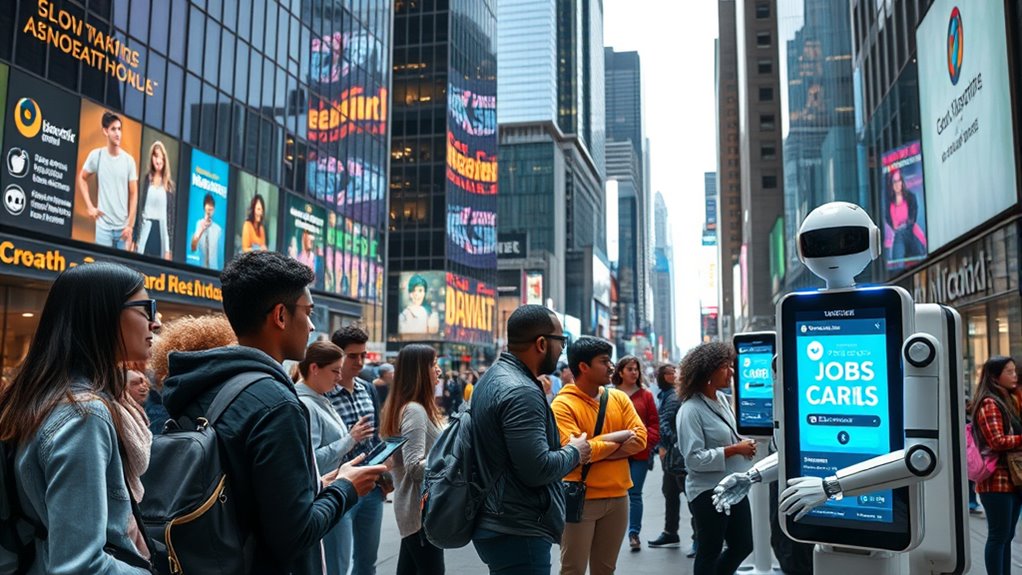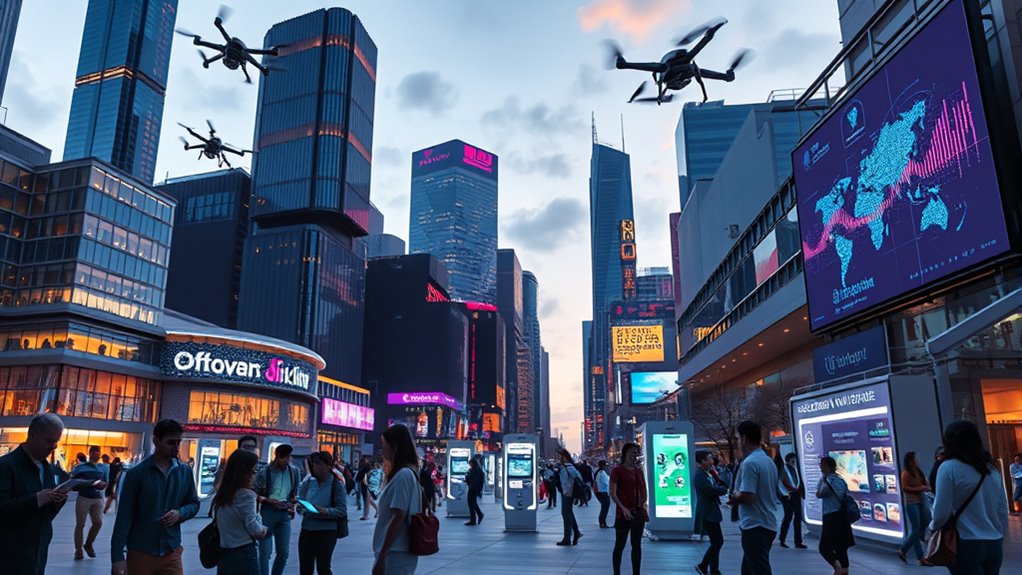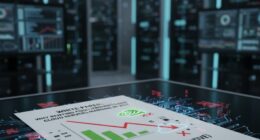As you explore automated welfare systems, you’ll see they promise efficiency but often overlook human complexities. These systems rely on personal data that can misclassify individuals, especially those with irregular incomes or informal jobs. Opaque decisions and embedded biases can unfairly deny benefits and erode trust. To truly rethink welfare today, it’s essential to balance automation with transparency, human judgment, and safeguards that protect social inclusion. Discover more about creating fairer, more inclusive support systems.
Key Takeaways
- Automation can improve efficiency but risks oversimplifying human circumstances, leading to misclassification and unfair benefit denial.
- Transparency issues in automated welfare systems hinder affected individuals’ ability to understand and challenge decisions.
- Algorithmic biases and technical errors can disproportionately harm marginalized populations and reduce trust in welfare programs.
- Legal and privacy concerns arise as governments collect extensive personal data, risking breaches and reducing individual agency.
- Balancing human judgment with transparent, accountable algorithms is essential to promote fairness, social inclusion, and trust.

As automation transforms welfare systems worldwide, governments face the urgent challenge of balancing efficiency with fairness. You might think that automating eligibility checks and benefit distribution would streamline processes and reduce errors, but the reality is more complex. Many systems rely on data aggregation that combines personal details like income, property, and bank accounts. While this seems exhaustive, it often misses the nuances of real life, leaving out context that could change a person’s eligibility. For example, someone with irregular income or informal employment might be wrongly classified, leading to wrongful benefit denial or unnecessary repayment demands. These flaws highlight how data-driven systems can oversimplify human situations.
Transparency is another critical issue. When algorithms determine benefits, it’s often unclear how decisions are made. You may find yourself unable to understand why you were denied or how your case was assessed, especially if the process lacks clear explanations. This opacity hampers your ability to contest decisions or seek redress, leaving many feeling powerless. Many systems still depend on human caseworkers to review flagged cases, which can create bottlenecks. For instance, in Serbia’s Social Card registry, automated alerts often require social workers to step in, slowing down the process and undermining automation’s promise of speed and efficiency.
Algorithmic bias further complicates the picture. Developers might unintentionally embed biases into risk assessment models, which then disproportionately impact marginalized groups. These biases often go unnoticed, causing unfair disadvantages for vulnerable populations. Glitches and errors are also common, producing false positives or negatives that can deny benefits to those who need them most or wrongly demand repayments from others. You might experience frustration when systems wrongly classify your situation, especially if there’s no straightforward way to challenge or correct the decision.
Accountability remains a major concern. When errors occur, assigning blame becomes complicated because legal frameworks haven’t kept pace with technological advances. Privacy intrusions are widespread, with governments collecting vast amounts of sensitive data, often without clear limits. This not only risks your personal information but also erodes trust in the system. The automation of welfare can diminish your human agency, leaving you with one-sided interactions that lack appeal processes or personal oversight. Furthermore, these systems tend to reinforce systemic inequalities, especially when they underestimate the needs of non-traditional households or disadvantaged communities. The opacity in appeals processes leaves you often unable to contest automated decisions effectively, deepening feelings of disenfranchisement. Recent studies also show that the deployment of automation can lead to widening inequalities, as marginalized groups are less likely to benefit from or trust these systems.
Ultimately, while automation promises efficiency and growth, it often falls short of delivering fairness and inclusivity. Without careful oversight, these systems risk exacerbating inequalities and undermining public trust. You need a balanced approach—integrating human judgment, transparent algorithms, and robust safeguards—to ensure welfare systems serve everyone fairly in this automated age.
Frequently Asked Questions
How Can Welfare Adapt to Rapidly Advancing AI Technologies?
You need to guarantee welfare systems stay effective amid advancing AI. This means combining automated decision-making with human oversight to prevent bias and discrimination. You should improve digital literacy and access, especially in rural and low-income areas, to avoid exclusion. Transparency in algorithms is vital, along with independent reviews to uphold human rights. By balancing technology with human judgment, you can create fair, accessible, and accountable welfare programs.
What Role Should Universal Basic Income Play in Future Welfare Models?
You should see UBI as a crucial part of future welfare models, providing a safety net amid automation’s job disruptions. It can simplify benefits, reduce bureaucracy, and guarantee everyone has basic income security. By combining UBI with retraining programs and healthcare, you create a resilient system that adapts to technological changes. Embracing digital distribution and innovative funding ensures UBI remains sustainable, supporting economic stability and social equity in an automated world.
How Can Governments Ensure Equitable Access to Automated Job Opportunities?
You can guarantee equitable access to automated job opportunities by implementing inclusive policies. Invest in AI infrastructure in underserved areas, develop tailored literacy programs, and fund AI adoption for small businesses in low-income regions. Enforce fair hiring practices, audit algorithms for bias, and promote cross-border standards. By supporting upskilling and reducing digital divides, you enable everyone to benefit from automation’s opportunities, fostering a more just and balanced labor market.
What Are Potential Privacy Concerns With Automated Welfare Systems?
Privacy worries worsen with widespread, unwarranted data collection, where your sensitive details are scrutinized, stored, and shared without your clear consent. Automated systems track your behaviors, biometric data, and personal profiles, creating constant digital footprints. You risk opaque algorithms making unfair decisions, with little transparency or accountability. These intrusive insights can lead to discrimination, digital exclusion, and diminished privacy, leaving you vulnerable to exploitation, bias, and breaches in trust.
How Will Automation Impact Long-Term Social Safety Nets?
Automation will challenge long-term social safety nets by increasing job displacement and widening inequality. You might find traditional protections strained as more workers face income loss, especially in vulnerable sectors. To adapt, you’ll need stronger policies like retraining programs, improved unemployment insurance, and better social assistance. Embracing these changes can help guarantee safety nets remain effective, providing support as automation reshapes the labor market and your community’s economic stability.
Conclusion
As we navigate this new landscape, think of welfare as a garden needing fresh seeds—innovation and adaptation—to thrive in an automated age. You have the power to plant policies that cultivate opportunity rather than simply harvest dependency. Embracing technology isn’t just about automation; it’s about nurturing growth and resilience. By rethinking welfare, you can help build a future where everyone has the tools to flourish, turning a barren field into a flourishing orchard.









